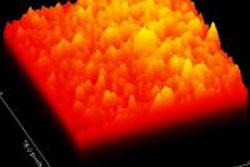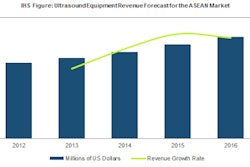During this Sunday morning scientific session, Flemming Forsberg, PhD, will present findings from a study he and colleagues conducted using a modified Logiq 9 scanner (GE Healthcare) with a 4D10L probe for 3D harmonic and subharmonic imaging of breast lesions.
Seventy-two patients were imaged; all received a bolus injection of an ultrasound contrast agent. The researchers chose 15 biopsy-proven malignant cases from the cohort for image processing. For each case, they also selected a region of interest corresponding to contrast agent flow within the lesion and tissue in both 3D harmonic imaging and SHI.
Forsberg and colleagues calculated contrast-to-tissue ratios for harmonic and subharmonic imaging before and after background subtraction for vessel-tissue regions of interest and also compared these ratios between particular slices and the entire volume.
Because tissue suppression in SHI was significantly higher than harmonic imaging prebackground filtering, SHI visualized breast cancer lesion vasculature 7.5 times better than harmonic imaging, although the researchers did note that this finding was not statistically significant.
The study suggests that visualizing the vascular structure of breast lesions with 3D imaging could improve lesion characterization, Forsberg's group concluded.



















